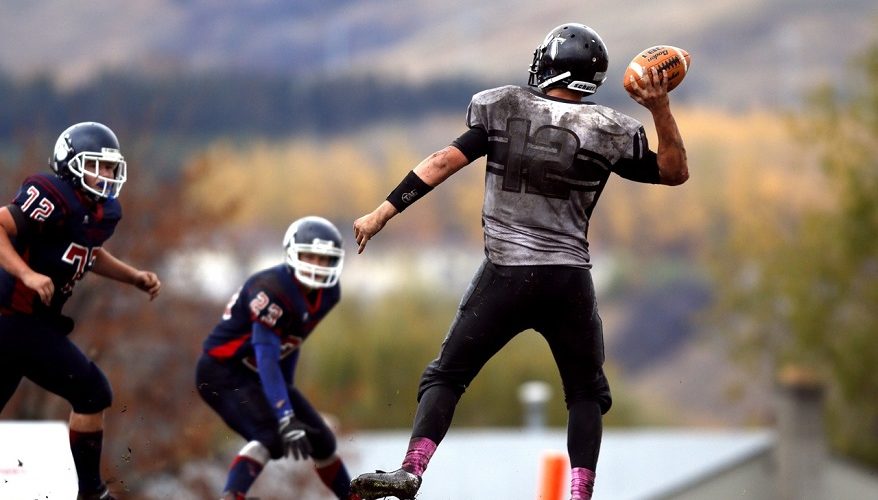Share this article about concussions with parents—especially those whose teenagers play sports.
Although another football season just wrapped up, the debate about head injuries and concussions still rages. Some people wonder what the fuss is all about, while others fear football may not have much of a future.
Picking on the Pigskin?
Serious injuries—from broken bones to concussions—can occur in many sports, from soccer and hockey to baseball and basketball. But serious trauma also can result from car accidents and water sports. Sportswriter Rick Reilly reminds us that even cheerleading can be dangerous. Yet football’s violent tackles have kept the conversation centered on the gridiron game. [tweet_box design=”default” float=”none”]More than three million elementary, middle school, and high school students in America play football, yet there’s still little to no data on head injuries in those age brackets.[/tweet_box]
Experts continue to debate the short- and long-term effects of concussions on players of all ages and at all levels of competition. Some people have wanted this discussion for decades; others believe football is being picked on unfairly.
Throughout adolescence, I played lots of different “contact sports.” Those years were marked with euphoric celebration, strong and trusting relationships, unforgettable lessons about teamwork, and yes, the occasional injury. When students ask how old I am, I now answer, “Old enough to lament my football-playing days.” Truth be told, I’d do it all over. Then again, I never suffered a traumatic injury. Not everyone was so fortunate.
Legitimate Concerns
The continuing conversation does seem warranted, based on emerging studies. For example, Wake Forest Baptist Medical Center studied 25 kids between the ages of 8 and 13. After just one season of football, MRIs revealed distinct changes in the young athletes’ developing brains. The scans showed alterations in the “white matter,” regardless of whether players had sustained a concussion. Another study, performed by mounting accelerometers to the helmets of 24 high school players, found that athletes who took the most frequent hits had the “most pronounced changes in several measures of brain health.”
Researchers at Virginia Tech have been collecting information to share with youth coaches. Their findings are eye-opening, and their recommendations are practical: Change practice drills to reduce hits. (If you’re unfamiliar with football practices, search “tackling drills” on YouTube to see what players experience in a typical day.)
Kathleen Duncanson, a friend and former student of mine, is an athletic trainer at Berry College. About concussions, she says, the key thing to understand is that “real-life professionals are attributing their depression, apathy, suicidal tendencies, behavioral changes, impulsivity, and aggression to the repetitive brain trauma they sustained throughout their career. No one is too young to sustain a concussion, and after sustaining one, they begin to snowball. [Concussions] become easier to sustain, require longer recovery, and the lasting effects continue to multiply.”
Making the Call
Because research is still in the early stages, most doctors aren’t willing to offer recommendations about contact sports such as football. So parents must make the call. Consider these two overarching thoughts during your decision-making:
- Don’t allow sports to be the end-all, be-all for your teenagers. As we’ve mentioned, sports come with many advantages. Athletic competition is a huge part of our culture, and that won’t change anytime soon. But don’t let your kids get carried away pursuing a sport, because it’s not always healthy. Kids can be tempted to chase the glamour and riches of being a sports icon, so parents must watch out for that type of tunnel vision. These days, families relocate just so Junior can play on a certain team or have a certain coach. As leaders of your family, maintain a healthy perspective on your kids’ athletic interests. Help them manage their choices, schedules, and expectations. [tweet_dis]Even if your young athlete goes on to win a Super Bowl ring or an Olympic gold medal, there’s life after sports. Prepare kids for it.[/tweet_dis]
- When in doubt, get your kid checked out. It’s not always easy to identify the most common injuries suffered by active teenagers. That includes everything from dehydration and sprains to fractures and concussions. So if your athlete complains of aches and pains, consult a trusted physician. It also doesn’t hurt to conduct multiple physical examinations for student athletes. An ounce of prevention really is better than a pound of cure.
Many questions are associated with whether or not young athletes should play high-impact sports. Seek answers by prayerfully weighing the pros and cons—and by maintaining open communication with your kids.



